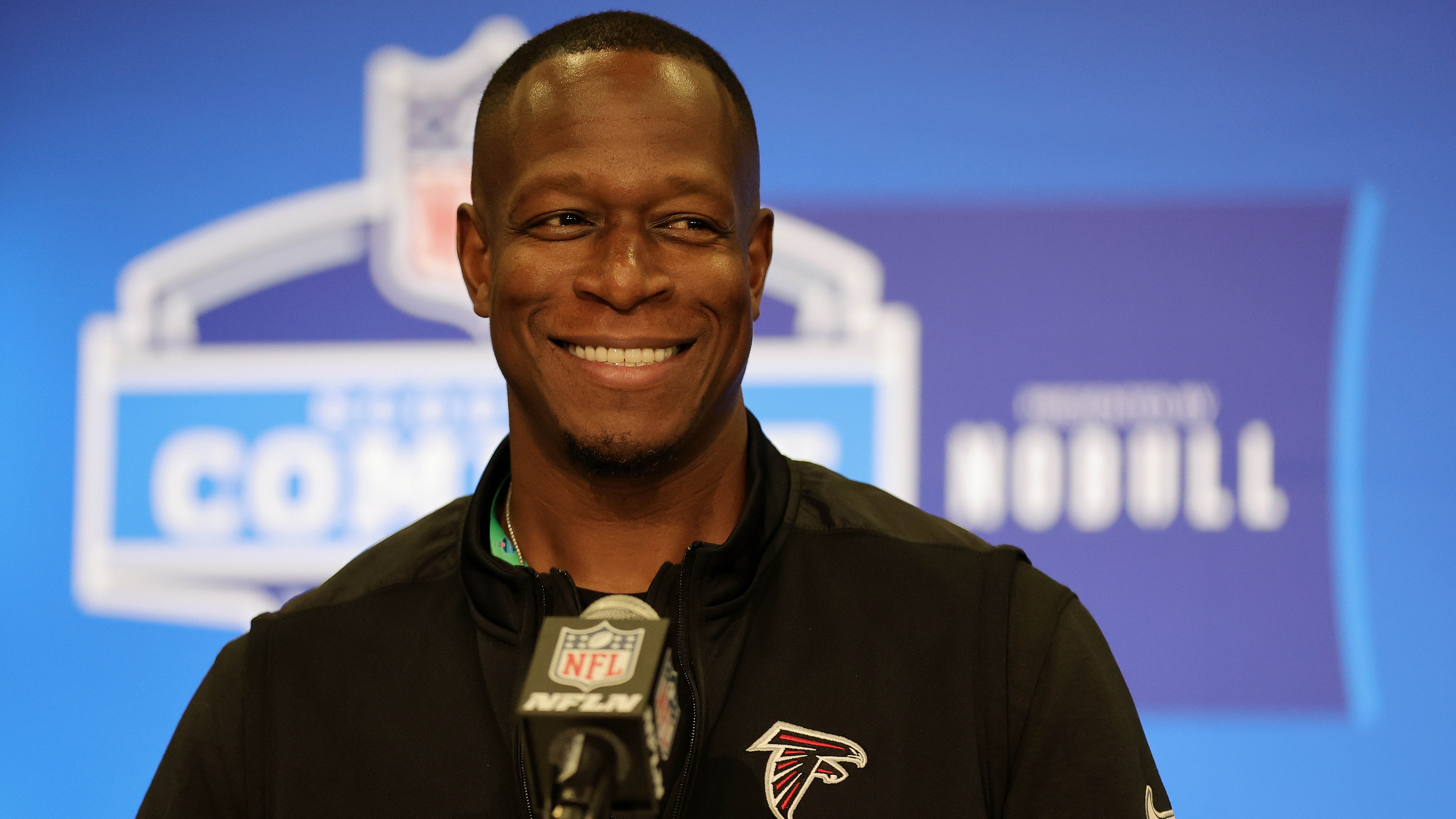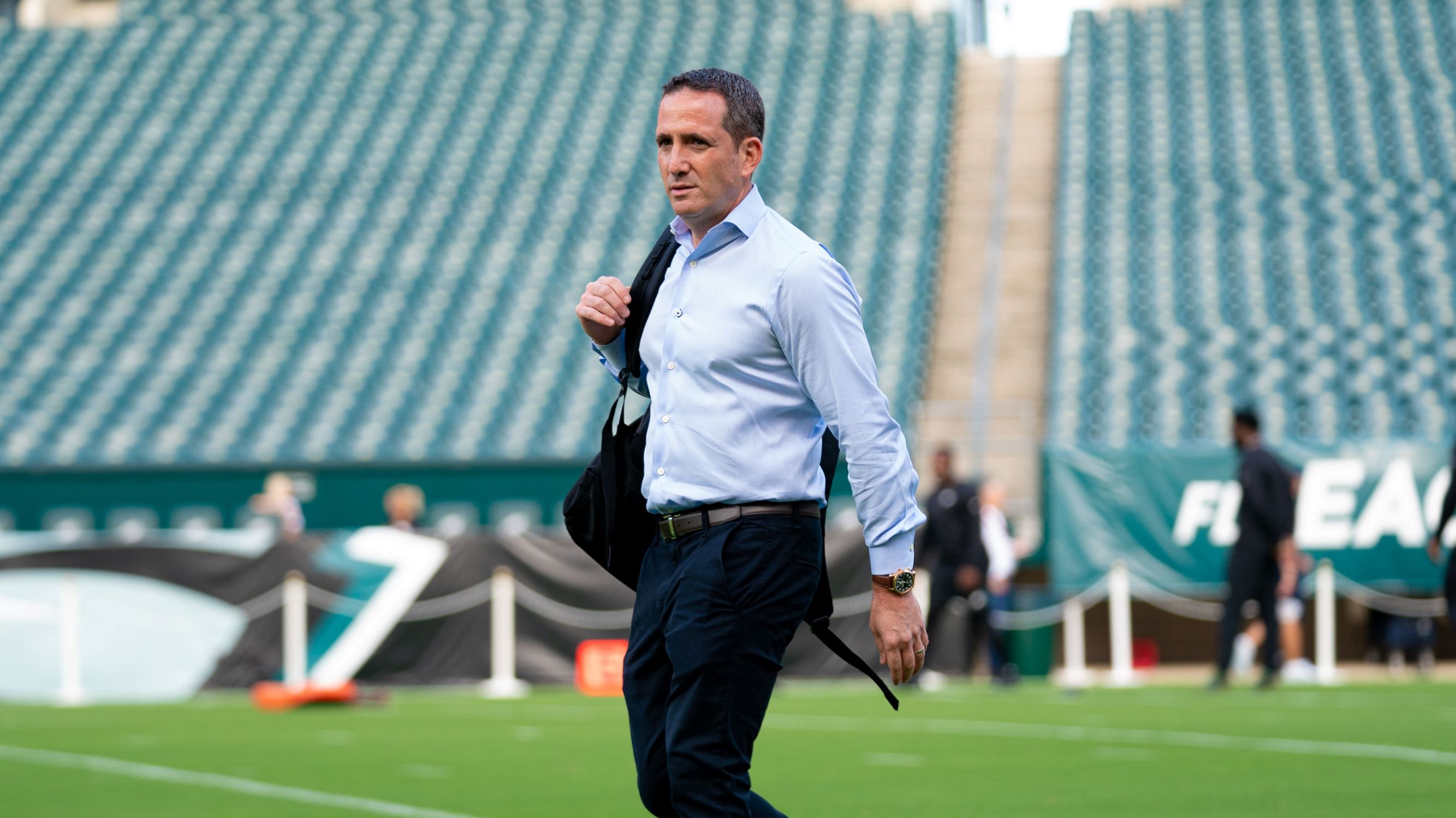Stay tuned for continuing coverage on this story from NBC10 reporters on Monday. NBC 10's Tim Furlong reports live from Penn State University at 4:30 a.m. Also make sure to check out our website tomorrow at 9 a.m. for a live stream of the NCAA's announcement of the sanctions against Penn State. NBC 10's Rosemary Connors reports live from Indianapolis.
The famed statue of Joe Paterno was taken down from outside the Penn State football stadium Saturday, eliminating a key piece of the iconography surrounding the once-sainted football coach accused of burying child sex abuse allegations against a retired assistant.
Workers lifted the 7-foot-tall statue off its base and used a forklift to move it into Beaver Stadium early Sunday as the 100 to 150 students watching chanted, “We are Penn State.”
The university announced earlier Saturday that it was taking down the monument in the wake of an investigative report that found the late coach and three other top Penn State administrators concealed sex abuse claims against retired assistant coach Jerry Sandusky.
Penn State President Rodney Erickson released the following statement Sunday morning:
I now believe that, contrary to its original intention, Coach Paterno’s statue has become a source of division and an obstacle to healing in our University and beyond. For that reason, I have decided that it is in the best interest of our university and public safety to remove the statue and store it in a secure location. I believe that, were it to remain, the statue will be a recurring wound to the multitude of individuals across the nation and beyond who have been the victims of child abuse.
On the other hand, the Paterno Library symbolizes the substantial and lasting contributions to the academic life and educational excellence that the Paterno family has made to Penn State University. The library remains a tribute to Joe and Sue Paterno’s commitment to Penn State’s student body and academic success, and it highlights the positive impacts Coach Paterno had on the University. Thus I feel strongly that the library’s name should remain unchanged.
Coach Paterno’s positive impact over the years and everything he did for this University predate his statue. At the same time it is true that our institution’s excellence cannot be attributed to any one person or to athletics. Rather, Penn State is defined by our actions and accomplishments as a learning community. Penn State has long been an outstanding academic institution and we will continue to be.
The world will be watching how Penn State addresses its challenges in the days ahead. While some may take issue with the decisions I have made, I trust that everyone associated with our University will respond in a civil and respectful manner.
Sports
In partnership with NBC Sports Philadelphia
I fully realize that my decision will not be popular in some Penn State circles, but I am certain it is the right and principled decision. I believe we have chosen a course that both recognizes the many contributions that Joe Paterno made to the academic life of our University, while taking seriously the conclusions of the Freeh Report and the national issue of child sexual abuse. Today, as every day, our hearts go out to the victims.
Meanwhile, the NCAA said that that it would levy “corrective and punitive measures” against Penn State in the wake of the child sex-abuse scandal involving former football assistant coach Jerry Sandusky. The organization announced Sunday that it would spell out the sanctions on Monday but disclosed no details.
NCAA President Mark Emmert hasn't ruled out the possibility of shutting down the Penn State football program in the wake of the scandal, adding that he had “never seen anything as egregious.”
The Paterno family issued a statement only hours later saying the statue's removal “does not serve the victims of Jerry Sandusky's horrible crimes or help heal the Penn State community.”
“We believe the only way to help the victims is to uncover the full truth,” said the family, which vowed its own investigation following the release of the report by former FBI director Louis Freeh. The family called the report “the equivalent of an indictment _ a charging document written by a prosecutor _ and an incomplete and unofficial one at that.”
Paterno's widow, Sue, and two of the Paternos' children visited the statue Friday as students and fans lined up to get their pictures taken with the landmark. The statue, weighing more than 900 pounds, was built in 2001 in honor of Paterno's record-setting 324th Division I coaching victory and his “contributions to the university.”
Construction vehicles and police arrived shortly after dawn Sunday, barricading the street and sidewalks near the statue, erecting a chain-link fence then concealing the statue with a blue tarp. Workers then used jackhammers to free the statue and a forklift to lower it onto a flat-bed truck that rolled into stadium garage bay about 100 feet away.
Many of those watching the removal stared in disbelief and at least one woman wept, while others expressed anger at the decision.
“I think it was an act of cowardice on the part of the university,” Mary Trometter of Williamsport, who wore a shirt bearing Joe Paterno's image. She said she felt betrayed by university officials, saying they promised openness but said nothing about the decision until just before the removal work began.
Dozens later gathered to watch workers remove Paterno's name and various plaques from the concrete walls behind the statue. Much of the work was hidden by blue tarps strung across temporary chain link fences while barricades kept observers on the other side of the street. Few watching said they understood the decision and feared what kind of punishment the NCAA would pile on.
Derek Leonard, 31, a university construction project coordinator who grew up in the area, said the construction workers on the project told him it was like watching a funeral when the statue was lowered onto the truck and then rolled away. He didn't completely agree with the decision but worried more that the NCAA would shut down the football program.
“It's going to kill our town,” he said.
Richard Hill, 67, West Chester, a Penn State alumnus, said, “If you punish the football program or Joe Paterno _ they're tied together _ this town is going to suffer. The revenue does an awful lot to keep this town viable and lively.”
Diane Byerly, who traveled from Harrisburg in the morning when she heard the statue was coming down, wondered if the university was trying to make a symbolic gesture in hopes of lessening the NCAA's penalty.
“Maybe it was an olive branch,” said Byerly, 63, a onetime season ticket holder whose father and son went to Penn State. “Maybe they'll go softer on us.”
Penn State President Rod Erickson said he decided to have the statue removed and put into storage because it “has become a source of division and an obstacle to healing.”
“I believe that, were it to remain, the statue will be a recurring wound to the multitude of individuals across the nation and beyond who have been the victims of child abuse,” Erickson said in a statement released at 7 a.m. Sunday.
He said Paterno's name will remain on the campus library because it “symbolizes the substantial and lasting contributions to the academic life and educational excellence that the Paterno family has made to Penn State University.”
The statue's sculptor, Angelo Di Maria, said it was upsetting to hear that the statue had been taken down.
“It's like a whole part of me is coming down. It's just an incredibly emotional process,” Di Maria said.
“When things quiet down, if they do quiet down, I hope they don't remove it permanently or destroy it,” he said. “His legacy should not be completely obliterated and thrown out. ... He was a good man. It wasn't that he was an evil person. He made a mistake.”
The bronze sculpture has been a rallying point for students and alumni outraged over Paterno's firing four days after Sandusky's Nov. 5 arrest _ and grief-stricken over the Hall of Fame coach's Jan. 22 death at age 85.
But it turned into a target for critics after a report by Freeh alleged a cover-up by Paterno, ousted President Graham Spanier and two Penn State officials, Athletic Director Tim Curley and Vice President Gary Schultz. Their failure to report Sandusky to child-welfare authorities in 2001 allowed him to continue molesting boys, the report found.
Paterno's family, along with attorneys for Spanier, Curley and Schultz, vehemently deny any suggestion they protected a pedophile. Curley and Schultz await trial on charges of failing to report child abuse and lying to a grand jury but maintain their innocence. Spanier hasn't been charged. Sandusky was convicted last month of 45 counts of sexual abuse of 10 boys.
Some newspaper columnists and former Florida State coach Bobby Bowden have said the statue should be taken down, while a small plane pulled a banner over State College reading, “Take the statue down or we will.”
But Paterno still has plenty of fans, and Penn State's decision to remove the monument won't sit well with them. One student had even vowed to “chain myself to that statue” if there was an attempt to remove it, but there was no attempt to stop the work Sunday.
University officials had called the issue a sensitive one in light of Paterno's enormous contributions to the school over a 61-year coaching career. The Paterno family is well-known in the community for philanthropic efforts, including the millions of dollars they've donated to the university to help build a library and fund endowments and scholarships.
Fan, follow and download: Get the latest from NBCPhiladelphia.com anytime, anywhere. Follow us on Twitter, Facebook and NBC Philadelphia. Sign up for our breaking news newsletter. And, get breaking news delivered right to your mobile phone -- just text PHIBREAKING to 639710 to sign up. (Message and data rates may apply.)



